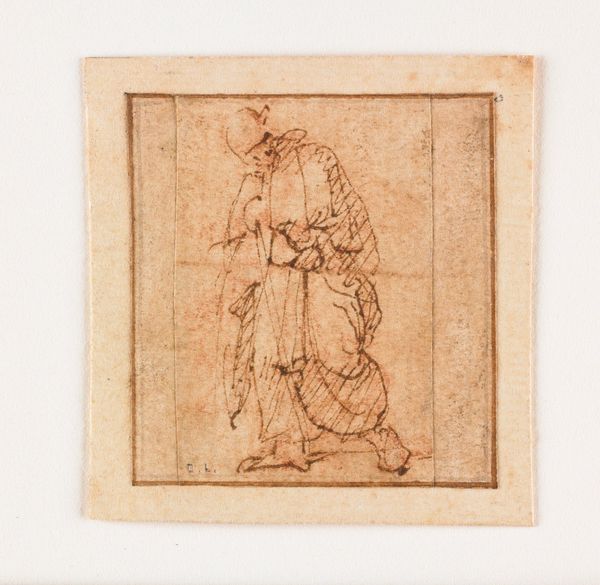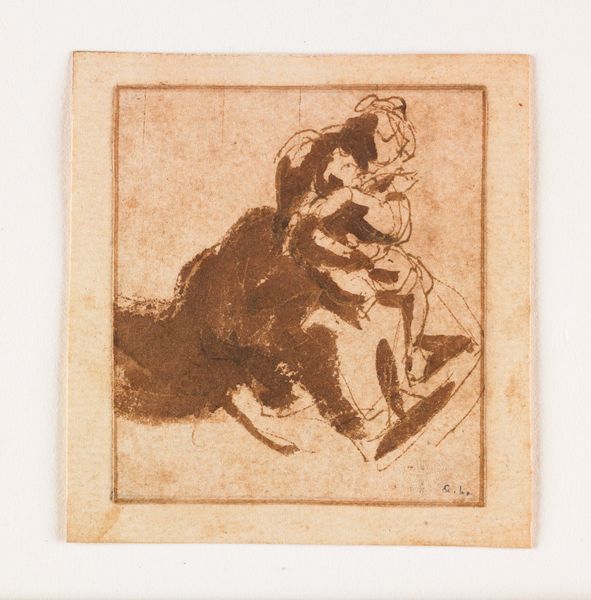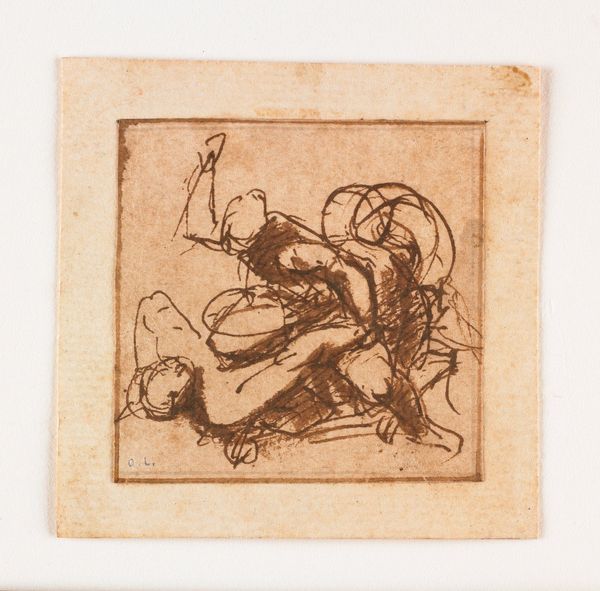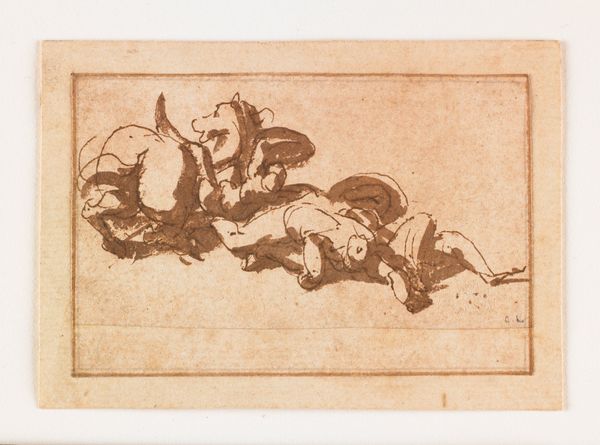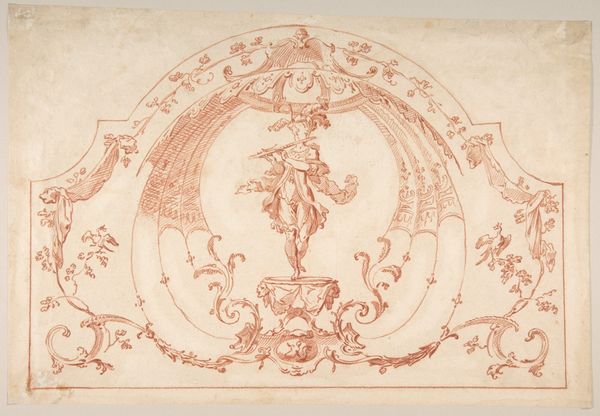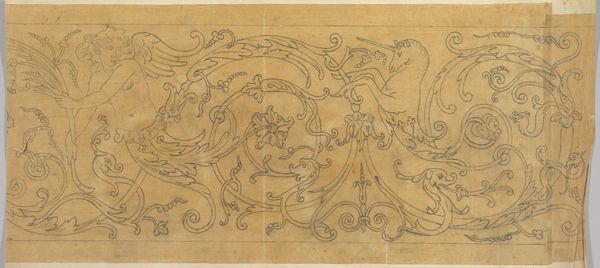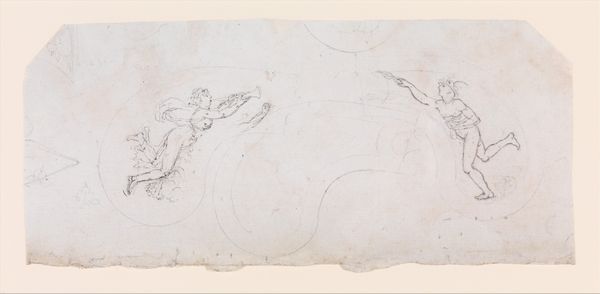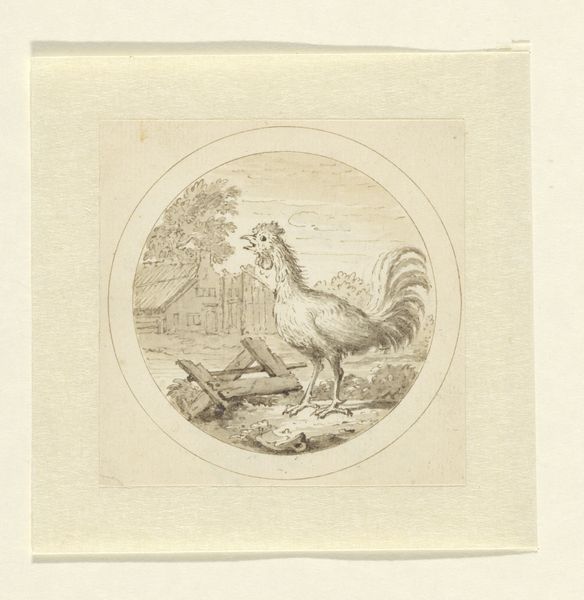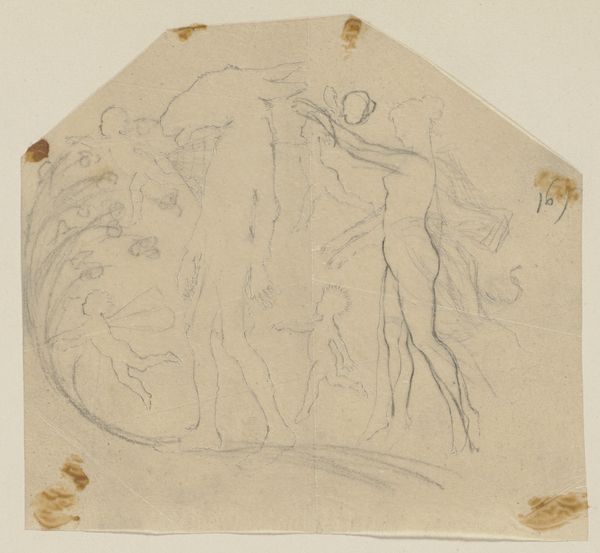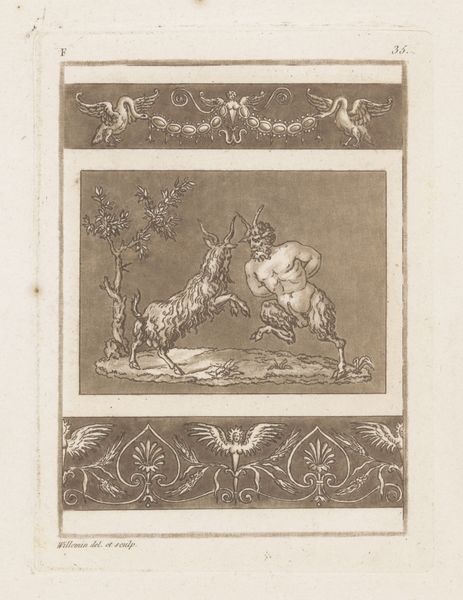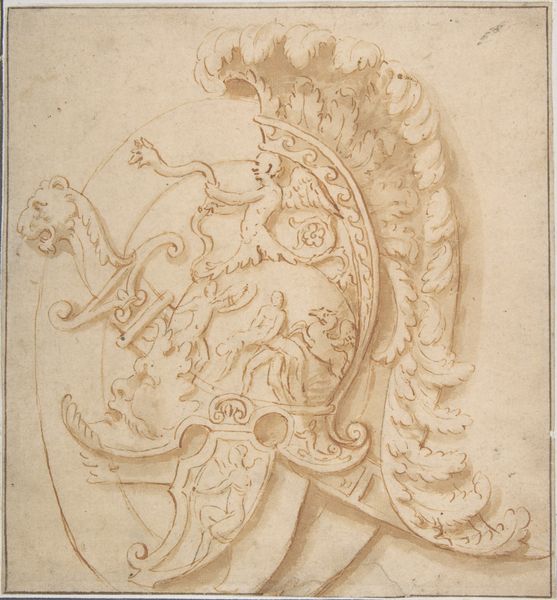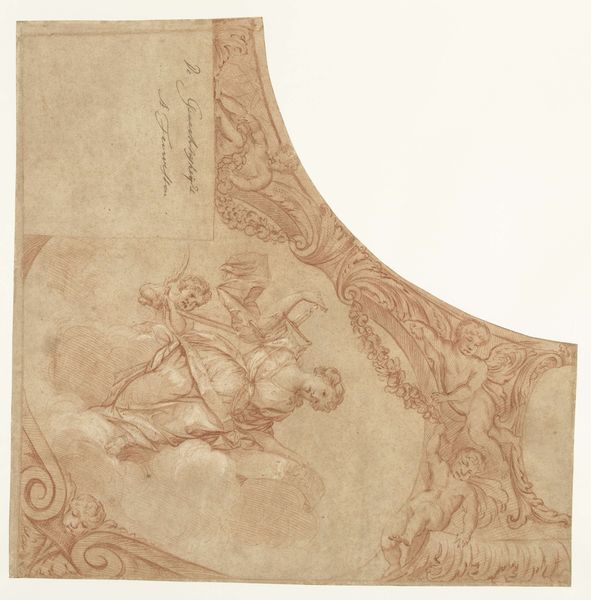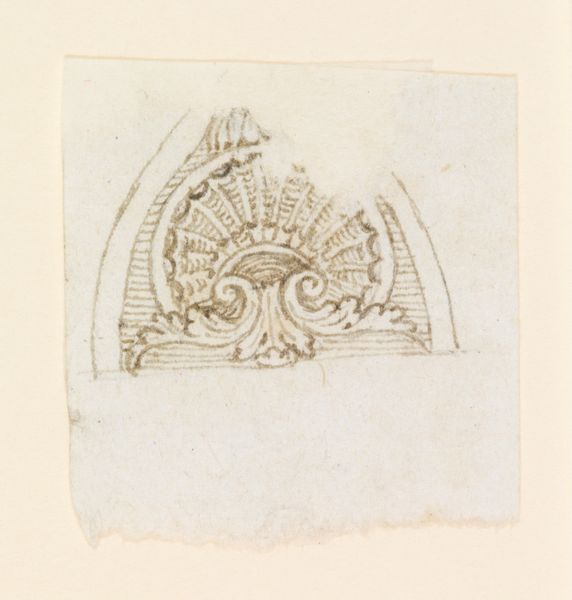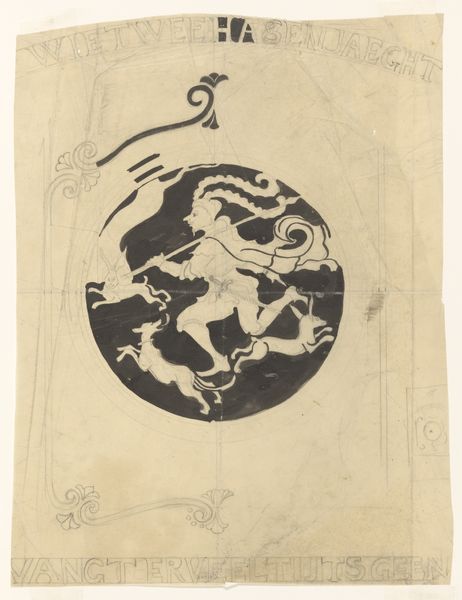
drawing, brown-ink, ink, pen
#
drawing
#
baroque
#
brown-ink
#
figuration
#
ink
#
pen
#
nude
Dimensions: 1 11/16 x 1 3/4 in. (4.29 x 4.45 cm) (sheet)1 15/16 x 2 in. (4.92 x 5.08 cm) (mount)
Copyright: Public Domain
Editor: This is Francesco Allegrini's "Study of a Reclining Male Figure" from the 17th century, created with pen and brown ink. I'm struck by the raw energy in the linework, even in this small drawing, and how the figure seems to push against the confines of the paper. What are your initial thoughts on the composition? Curator: Observe how Allegrini uses line to define the figure. Note the concentration of hatching around the torso and head, suggesting volume and shadow, versus the relative simplicity of the limbs. The contour lines serve not just to outline but also to convey the muscular tension and the torsion of the body. It's a study in dynamism captured through essentially static marks. Do you find that the lack of background contributes to or detracts from the piece? Editor: I think the lack of background intensifies the focus on the figure itself, allowing us to really dissect the artist's technique in portraying the human form, which makes it seem so active. I’m interested in the fact that the limbs seem disproportionate; how does that play into the artwork’s effect? Curator: Precisely! Consider the function of this study. It’s not necessarily a finished piece, but an exploration of form and pose. The seemingly disproportionate limbs may, in fact, be an exercise in foreshortening, a key element in Baroque art’s striving for drama and realism. The hand, dramatically foreshortened, juts out from the picture plane, demanding our attention. The lines create shape that does not necessarily focus on accuracy of life form, and instead aims to express the art of human form in a more evocative representation. Editor: So, it's more about the artist's investigation of representing three-dimensionality on a two-dimensional surface than about literal accuracy? That really changes how I see it. Curator: Indeed. The power lies in Allegrini’s manipulation of line to suggest volume, movement, and even emotion. Form, line, tone and shape. These building blocks shape our perceptions. Editor: Thanks; I appreciate seeing how even seemingly simple line work can reveal such complex formal ideas!
Comments
No comments
Be the first to comment and join the conversation on the ultimate creative platform.
